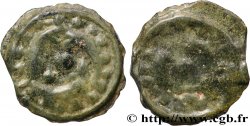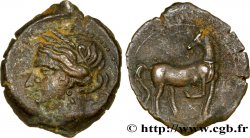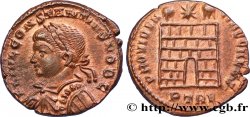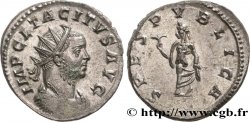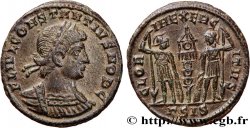v16_0126 - PARTHIA - PARTHIAN KINGDOM - ARTABANUS IV Drachme
MONNAIES 16 (2002)
Starting price : 2 000.00 €
Estimate : 4 000.00 €
unsold lot
Starting price : 2 000.00 €
Estimate : 4 000.00 €
unsold lot
Type : Drachme
Date: n.d.
Mint name / Town : Ecbatane
Metal : silver
Diameter : 17 mm
Orientation dies : 12 h.
Weight : 3,67 g.
Rarity : UNIQUE
Coments on the condition:
Exemplaire de qualité exceptionnelle pour une monnaie extraordinaire, de la plus grande rareté. Magnifique patine de médaillier. Petit flan, mais parfaitement centré des deux côtés
Catalogue references :
Predigree :
Cet exemplaire provient de la collection Delorme
Obverse
Obverse legend : ANÉPIGRAPHE.
Obverse description : Buste d’Artaban IV à gauche, tête coiffée de la tiare avec oreillette, un bandeau simple, avec nœud qui tombe derrière la tête, la barbe triangulaire longue bifide et pointue ; la tiare est gemmée ou perlée et richement décorée ; derrière la tiare, abréviation d’Artaban.
Reverse
Reverse legend : LÉGENDE CORROMPUE, GRECQUE ET PEHLVI.
Reverse description : Archer assis à gauche sur un trône, tenant un arc de la main droite ; au-dessous, un monogramme.
Commentary
Semble complètement inédit et non répertorié. Manque à tous les ouvrages consultés. De la plus grande rareté. Cet exemplaire est illustré dans l’article de P. Delorme (N&C 321, p. 39, fig. 40). P. Delorme lui a aussi consacré un article complet (fiche technique) dans (N&C. 330, p. 81-82).
Appears to be completely unpublished and unlisted. Missing from all consulted works. Extremely rare. This example is illustrated in P. Delorme's article (N&C 321, p. 39, fig. 40). P. Delorme also devoted a complete article (technical sheet) to it in (N&C. 330, p. 81-82)
Appears to be completely unpublished and unlisted. Missing from all consulted works. Extremely rare. This example is illustrated in P. Delorme's article (N&C 321, p. 39, fig. 40). P. Delorme also devoted a complete article (technical sheet) to it in (N&C. 330, p. 81-82)








 Report a mistake
Report a mistake Print the page
Print the page Share my selection
Share my selection Ask a question
Ask a question Consign / sell
Consign / sell